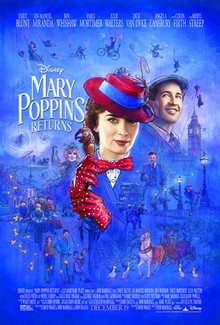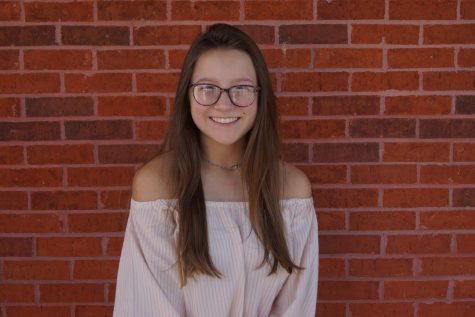Does “Mary Poppins Returns” Live Up to the Original Movie?

Mary Poppins Returns, the practically perfect musical sequel to the original Mary Poppins, hit theatres on Dec. 19 2018.
February 7, 2019
*SPOILERS AHEAD*
“Mary Poppins Returns” hit theaters on Dec. 19 2018, and it became a practically perfect favorite for all of the musical-lovers of the world. However, before the movie came out, there was scrutiny from fans of the classic questioning whether the sequel would be able to fill its magnificent predecessor’s shoes. Since both movies are musicals, the debate is multifaceted. Did the storyline, scores, choreography, and vocals live up to the height of Mary Poppins’ marvelous presence?
Let us begin with the casting. The original movie is full of absolute legends. Julie Andrews and Dick van Dyke offer some intense performances to live up to. Emily Blunt took on Andrews’ role of Mary Poppins, and, though there was not technically a Bert character in the sequel, Lin Manuel Miranda performed as a similarly jolly leerie (lamplighter). There’s no doubt that these actors are becoming (if they aren’t already) as iconic as the original cast. Emily Blunt is best known for her work in A Quiet Place, a film that John Krasinski, Blunt’s husband, wrote and directed. She was also seen in The Devil Wears Prada. Seeing that both of these became instant classics, Blunt has what it takes to play Andrews’ beloved character. Lin Manuel Miranda is known around the world for his acting and musical genius. He wrote the music for Hamilton and Moana, and he has been a part of multiple Broadway productions and multiple movies. Thus, in terms of casting, Mary Poppins Returns has no shortcomings.
As for the storyline itself, “Mary Poppins Returns” has so much to give. It is set years after the original film, seeing that Michael Banks, who was a child in the original, is all grown up with three young children of his own. Having just lost his wife, Michael is struggling with raising his children, dealing with finances, and finding happiness. The parallels between the parenting issues in the first movie and that in the second are obvious but differ in cause. By the end, Mary Poppins, with her glorious ability to spread joy and magic, reminds Michael that the best way to raise children is to become one again, and she delivers a similar message in the first movie. The movie also draws parallels between the storybook-like scenes from inside the cracked bowl to the real-life issues with the bank. “Mary Poppins Returns” offers a story that ends happily and with a not-so-subtle wave of nostalgia, while avoiding happily-ever-after cliches and direct copy-catting of the original film.
Last, but most definitely not least, comes the music. The sequel doesn’t repeat a single song from the first movie, allowing for a complete musical makeover. Some may say the new “supercalifragilisticexpialidocious” blossoms from the speedy storytelling in “A Cover is Not the Book,” and “Let’s Go Fly a Kite” comes back to life in “Nowhere to Go But Up.” The vocals of every actor are unmatched and unique, playing to their characters and their predecessors, and the score itself is already iconic. With the charm of a classic musical, the “Mary Poppins Returns” soundtrack prompts sing-alongs and instantly plays on repeat in listeners’ minds.
From icons to new stars, parallels to contrasts, and classics to new compositions, “Mary Poppins Returns” undoubtedly manages to fill the shoes of its original film.



